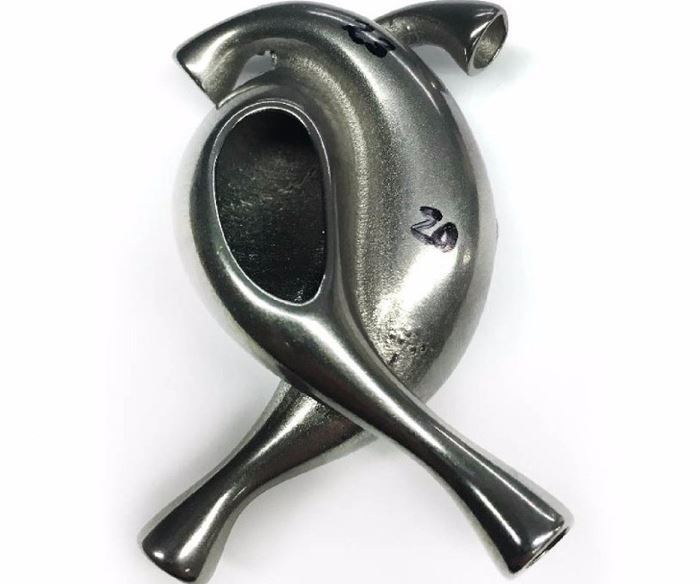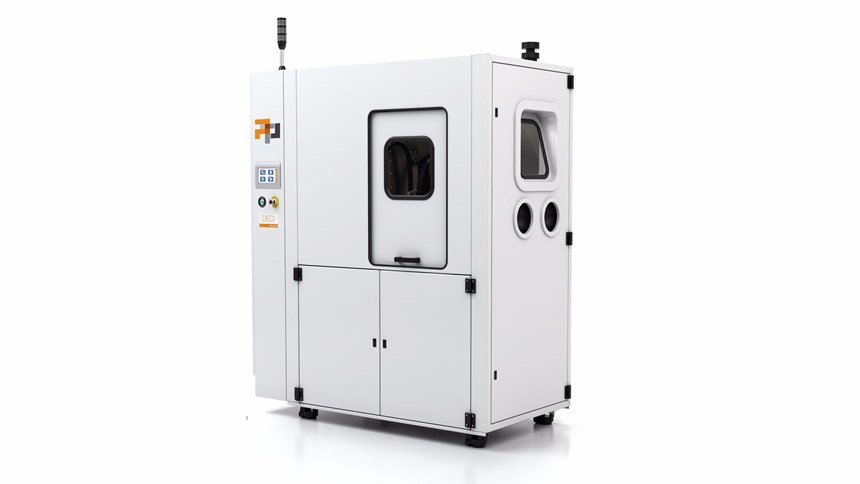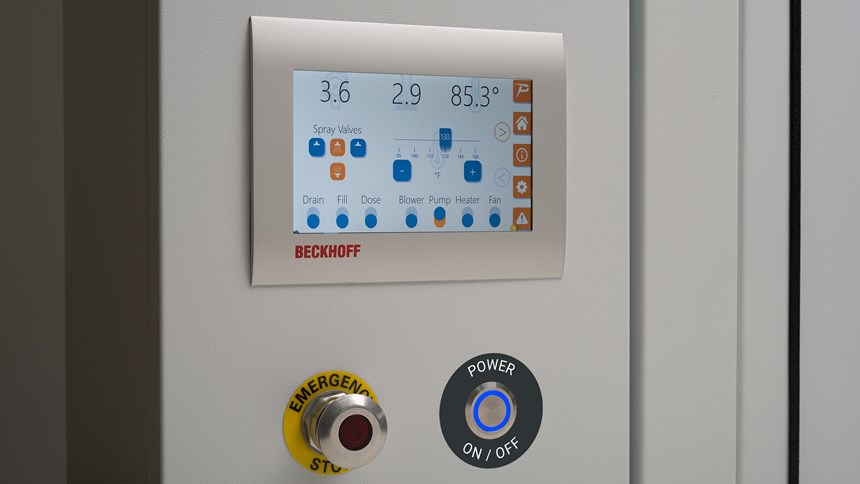Postprocessing System Automates 3D-Printed Part Finishing
The Hybrid Deci Duo system from PostProcess Technologies combines finishing media and chemistry with a PC control to automate support removal and surface finishing.
Share
Read Next
Historically, removing support structures and finishing surfaces on 3D-printed parts has been a manual process, requiring a high level of skill and slowing production. And although traditional manufacturing technologies have been applied to additive parts, these solutions may not be best for 3D-printed parts. According to PostProcess Technologies, traditional techniques are not attuned to 3D printing material science, and therefore can result in breakage or sacrifice the part’s fine feature details.
As the industry is scaling, there is a need for a more efficient way to handle this bottleneck. The Hybrid Deci Duo machine, an automated postprocessing system for 3D-printed parts, is PostProcess Technologies’ solution. This machine combines support removal and surface finishing into a single system for automated postprocessing within a space-saving footprint.
The Hybrid Deci Duo agitates the parts with media and chemistry, controlled by the PostProcess’ Automat3D. This software platform allows for different agitation levels to cater to a variety of geometries, enabling users to mix geometries into batches to save time and operate more efficiently. The system does not require calibration for each individual part, the company says.
According to Daniel Hutchinson, PostProcess founder and CTO, the software “accurately inspects and interprets each part—regardless of geometry. In this way, the system provides reliable support removal and dependable surface finishing.”
To complement the Automate3D software, PostProcess uses a full-featured PC-based control system. A Beckhoff C6706 Panel PC with a 7-inch touchscreen and multi-core Intel Atom processor (4 Core) serves as the all-in-one control and HMI device for the Hybrid Deci Duo system. The PC was selected because of its Windows 10 IoT operating system and ability to communicate between separate devices, external sources and applications, in addition to aesthetics.
As Hutchinson explains, “for the additive manufacturing market to scale, we need to be addressing the challenges that increased speed and throughput are creating using today’s advancements, not applying decades-old traditional manufacturing solutions. Utilizing PC-based control systems adds an ideal level of familiarity to users.” Most 3D printers are controlled by PCs rather than PLC-driven, so a familiar platform helps to shorten the learning curve on the finishing machine.
EtherCAT I/O terminals are installed across all PostProcess production machines to maximize performance with a minimal footprint and streamline future efforts to integrate control of multiple machines. The system’s EtherCAT communication provides a complete system bus in the Hybrid Deci Duo.
Related Content
-
Top 10 Additive Manufacturing Stories of 2023
Laser powder bed fusion, proprietary AM processes, machining and more made our list of top 10 articles and videos by pageviews this year.
-
Copper, New Metal Printing Processes, Upgrades Based on Software and More from Formnext 2023: AM Radio #46
Formnext 2023 showed that additive manufacturing may be maturing, but it is certainly not stagnant. In this episode, we dive into observations around technology enhancements, new processes and materials, robots, sustainability and more trends from the show.
-
New Zeda Additive Manufacturing Factory in Ohio Will Serve Medical, Military and Aerospace Production
Site providing laser powder bed fusion as well as machining and other postprocessing will open in late 2023, and will employ over 100. Chief technology officer Greg Morris sees economic and personnel advantages of serving different markets from a single AM facility.

















